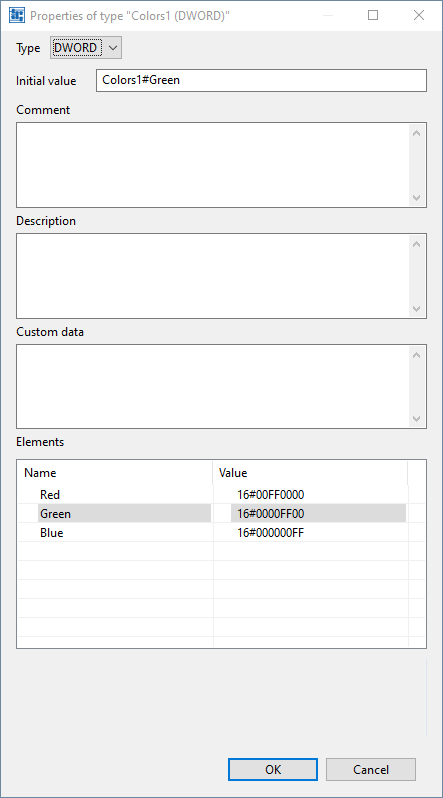Creating enums for the application within the enum-editor
The enum-editor is an →editor that allows you to edit already created enum-objects (also called →enums for short) to be used in applications.
Representation of an enum
An enum is displayed graphically in the so-called enum-editor:

The enum-editor is a modal dialog whose size you can change.
Open the enum-editor like this: Double-click on the enum-object which is displayed with the icon ![]() in a view with projects and resources.
in a view with projects and resources.
Enum-editor vs. ST-editor
Do not double-click the ST-object displayed in the project explorer. This opens the ST-editor which displays the ST-syntax of the enum – see "Declaration of a data type with named values (enums) in ST" for details on this ST syntax.
If an ST-object contains more than one declared language element (e.g. several enums), the ST-editor will be opened instead of the enum-editor. If you want to use the enum editor for modifying an enum, it is best to create only one language element in such objects (see "Creating an enum-object" for an instruction on how to create one enum per ST-object).